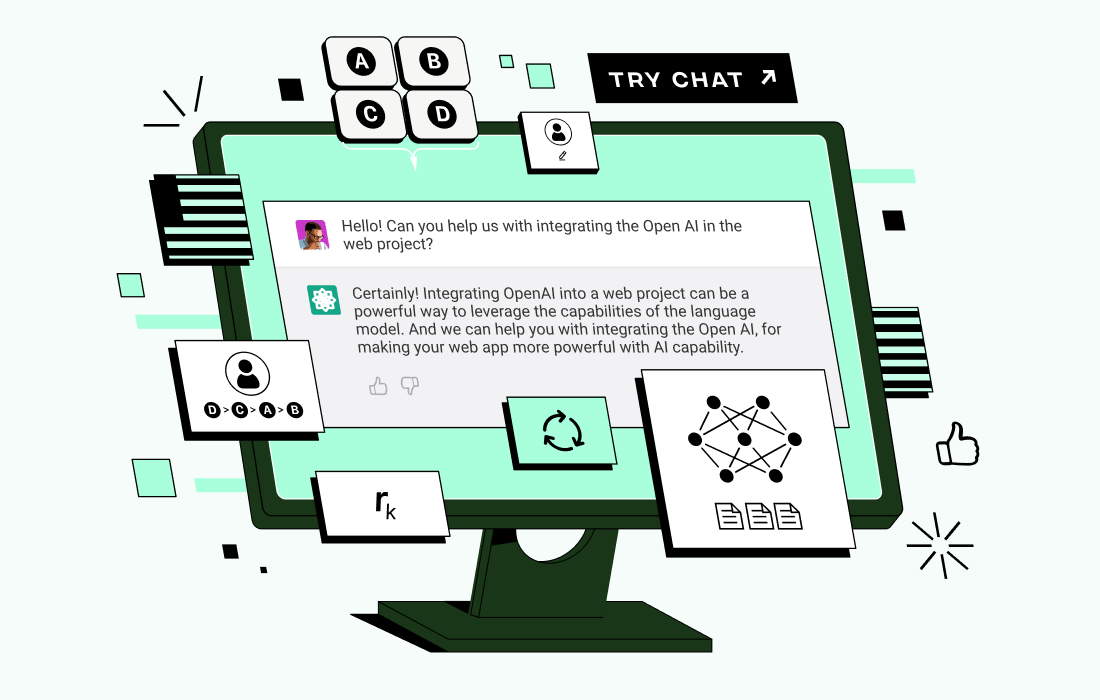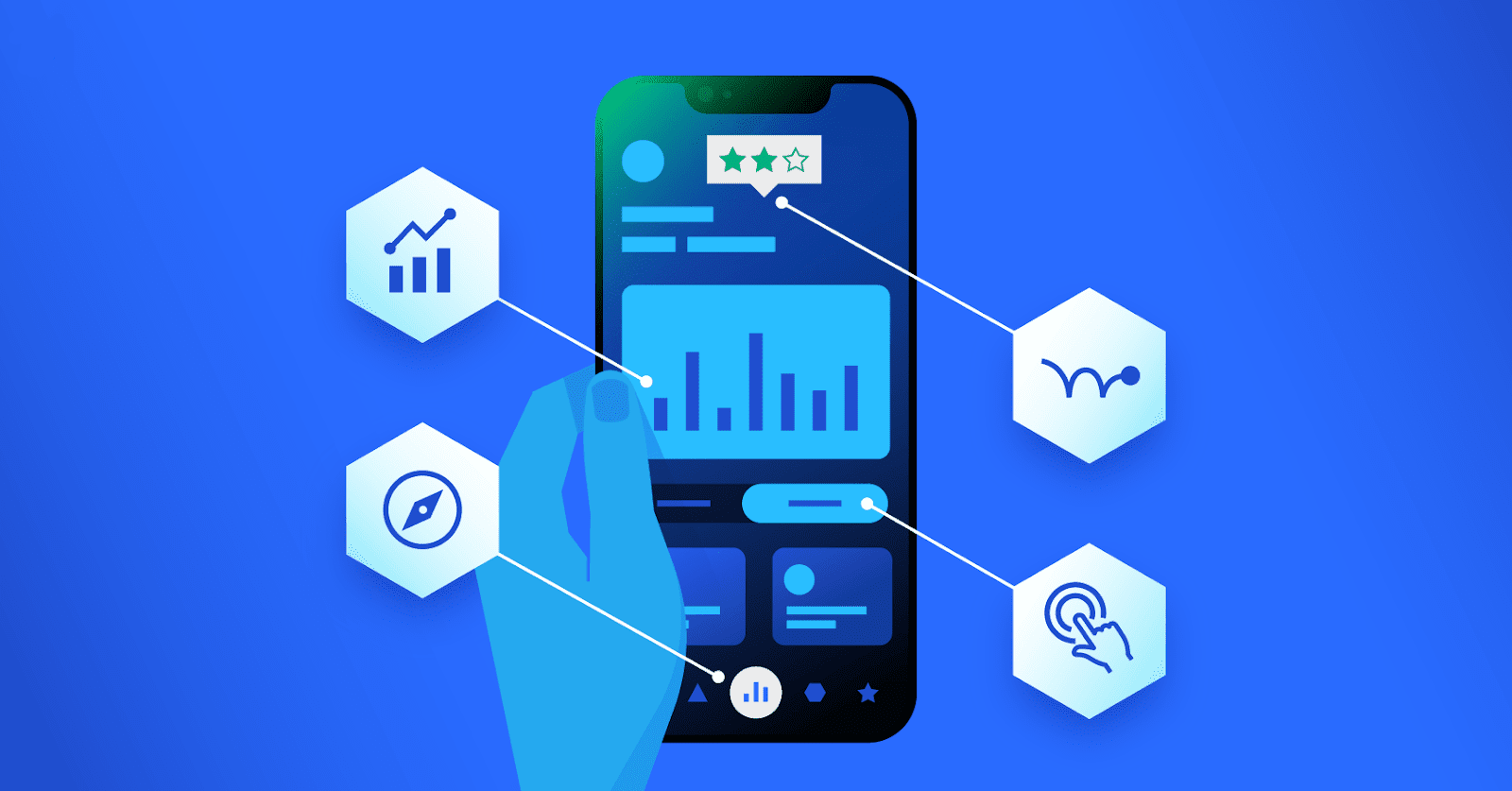As a seasoned app developer, I’ve always been fascinated by the rapid advancements in artificial intelligence (AI) and its potential to revolutionize the world of app development. One particular AI platform that has captured my attention is OpenAI, a leading research company that has made significant strides in pushing the boundaries of what’s possible with AI.
In this article, we’ll dive deep into the world of OpenAI and explore the pros and cons of integrating it into app development. We’ll uncover real-world examples of successful OpenAI integration, discuss the challenges and limitations, and examine the ethical considerations surrounding its use. Finally, we’ll provide you with valuable tips and resources to help you effectively leverage OpenAI in your app development projects.
Pros of Integrating OpenAI in App Development
Enhanced Natural Language Processing (NLP)
One of the standout features of OpenAI is its remarkable natural language processing (NLP) capabilities. By leveraging OpenAI’s language models, such as GPT-3, app developers can create chatbots, virtual assistants, and other conversational interfaces that can engage users in more natural and human-like dialogues. This can lead to improved user experience, increased user engagement, and better overall customer satisfaction.
Improved Content Generation
OpenAI’s language models can also be utilized for content generation, allowing app developers to create high-quality written content at scale. This can be particularly useful for developing personalized content, generating product descriptions, or even creating unique marketing materials. By tapping into OpenAI’s creative capabilities, app developers can save time and resources while delivering engaging and relevant content to their users.
Enhanced Predictive Capabilities
Another key advantage of integrating OpenAI in app development is its ability to enhance predictive capabilities. OpenAI’s models can be trained on vast amounts of data to make accurate predictions and forecasts, which can be valuable for a wide range of app use cases, such as demand forecasting, user behavior analysis, and personalized recommendations.
Increased Automation and Efficiency
By incorporating OpenAI’s AI-powered capabilities, app developers can automate various tasks and workflows, leading to increased efficiency and productivity. This can include automating customer support, generating code snippets, and even streamlining the app development process itself.
Opportunities for Innovation
Integrating OpenAI in app development opens up a world of opportunities for innovation. Developers can explore new and creative ways to leverage AI technology, pushing the boundaries of what’s possible and delivering truly unique and cutting-edge app experiences to their users.
Cons of Integrating OpenAI in App Development
Complexity and Technical Challenges
Integrating OpenAI into an app can be a complex and technically challenging endeavor. Developers need to have a strong understanding of AI, machine learning, and natural language processing to effectively leverage OpenAI’s capabilities. This can require significant time, resources, and specialized expertise, which may not be readily available in all app development teams.
Potential for Bias and Inaccuracy
OpenAI’s language models, like any AI system, can be susceptible to biases and inaccuracies, particularly when dealing with sensitive or complex topics. Developers need to be mindful of these limitations and implement robust testing and validation processes to ensure the accuracy and reliability of the AI-powered features in their apps.
Data Privacy and Security Concerns
Integrating OpenAI in app development may raise data privacy and security concerns, as the platform requires access to user data and potentially sensitive information. Developers must ensure that they comply with relevant data protection regulations and implement robust security measures to safeguard user data.
Cost and Scalability Challenges
Depending on the specific use case and the scale of the app, integrating OpenAI can be a costly endeavor. Developers need to carefully evaluate the cost-benefit analysis and consider the scalability of the AI-powered features to ensure that the investment in OpenAI integration is justified and sustainable.
Ethical Considerations
The use of AI in app development raises important ethical considerations, such as transparency, accountability, and the potential for unintended consequences. Developers must carefully consider the ethical implications of integrating OpenAI and ensure that its use aligns with their app’s values and the broader ethical principles of their organization.
Real-World Examples of Successful OpenAI Integration in Apps
Anthropic’s Claude AI Assistant
Anthropic, a leading AI research company, has successfully integrated OpenAI’s language models to create Claude, an advanced AI assistant that can engage in natural language conversations, answer questions, and assist with a variety of tasks. Claude has been integrated into various productivity and collaboration apps, demonstrating the potential of OpenAI-powered features to enhance user experience and productivity.
Jasper AI’s Content Generation Platform
Jasper AI, a content creation platform, has leveraged OpenAI’s language models to enable users to generate high-quality written content, including blog posts, product descriptions, and marketing copy. By tapping into OpenAI’s creative capabilities, Jasper AI has empowered its users to streamline their content creation workflows and boost their productivity.
Anthropic’s AI-Powered Code Generation
Anthropic has also showcased the potential of OpenAI integration in the realm of software development. By leveraging OpenAI’s language models, Anthropic has developed an AI-powered code generation tool that can assist developers in writing and debugging code, accelerating the app development process.
Dall-E’s Image Generation Capabilities
While not directly related to app development, OpenAI’s Dall-E model has gained widespread attention for its ability to generate unique and highly realistic images based on textual descriptions. This technology has the potential to be integrated into various app experiences, such as personalized content creation, visual design tools, and even augmented reality applications.
These real-world examples demonstrate the versatility and potential of OpenAI integration in app development, paving the way for innovative and transformative app experiences.
Challenges and Limitations of Integrating OpenAI in App Development
Ensuring Accuracy and Reliability
One of the key challenges in integrating OpenAI in app development is ensuring the accuracy and reliability of the AI-powered features. Developers need to implement rigorous testing and validation processes to address potential biases, inconsistencies, and inaccuracies in the language models.
Maintaining Data Privacy and Security
Integrating OpenAI in app development often requires the transfer and processing of user data, which raises concerns about data privacy and security. Developers must adhere to strict data protection regulations, implement robust security measures, and maintain transparency about data usage to build user trust.
Overcoming Technical Complexity
Leveraging OpenAI’s capabilities can be a technically complex endeavor, requiring deep expertise in AI, machine learning, and natural language processing. Developers may need to invest significant time and resources in upskilling their teams or collaborating with specialized AI experts to effectively integrate OpenAI in their app development projects.
Addressing Scalability and Cost Challenges
As the use of OpenAI-powered features in an app scales, developers may face challenges related to cost and infrastructure scalability. Careful planning and optimization are required to ensure that the integration of OpenAI remains sustainable and cost-effective, especially for resource-constrained app development teams.
Navigating Ethical Considerations
The use of AI in app development raises important ethical considerations, such as transparency, accountability, and the potential for unintended consequences. Developers must carefully navigate these ethical challenges and ensure that the integration of OpenAI aligns with their app’s values and the broader ethical principles of their organization.
Ethical Considerations in Using OpenAI in App Development
Transparency and Accountability
When integrating OpenAI in app development, it’s crucial to maintain transparency about the use of AI-powered features and ensure accountability for their performance and outcomes. Developers should communicate to users how OpenAI is being used, the limitations of the technology, and the steps taken to address potential biases or inaccuracies.
Bias and Fairness
OpenAI’s language models, like any AI system, can be susceptible to biases based on the data used for training. Developers must proactively address these biases and ensure that the integration of OpenAI in their apps does not perpetuate or amplify unfair or discriminatory practices.
Privacy and Data Protection
The integration of OpenAI in app development often involves the processing of user data, which raises concerns about privacy and data protection. Developers must comply with relevant data protection regulations, obtain user consent, and implement robust security measures to safeguard user information.
Responsible Innovation
Integrating OpenAI in app development should be done with a strong focus on responsible innovation. Developers must carefully consider the potential social and environmental impact of their AI-powered features and ensure that they are aligned with the greater good and the values of their organization.
Ongoing Monitoring and Improvement
Ethical considerations in using OpenAI should not be a one-time exercise. Developers must establish ongoing monitoring and improvement processes to continuously assess the performance, impact, and ethical implications of the AI-powered features in their apps, and make necessary adjustments to maintain the highest standards of ethical conduct.
Tips for Effectively Integrating OpenAI in App Development
- Develop a Solid Understanding of OpenAI: Invest time in understanding the capabilities, limitations, and best practices for using OpenAI’s language models and other AI-powered features. This will help you make informed decisions and effectively integrate OpenAI into your app development projects.
- Establish a Robust Testing and Validation Process: Implement a rigorous testing and validation process to ensure the accuracy, reliability, and fairness of the OpenAI-powered features in your app. This may include testing for biases, edge cases, and unexpected behaviors.
- Prioritize Data Privacy and Security: Develop a comprehensive data privacy and security strategy to protect user information and comply with relevant regulations. This may involve implementing encryption, access controls, and data governance policies.
- Collaborate with AI Experts: Consider partnering with AI experts or specialized agencies to leverage their expertise in integrating OpenAI and other AI technologies into your app development projects. This can help you overcome technical challenges and ensure the effective and responsible use of AI.
- Adopt a Flexible and Iterative Approach: Recognize that integrating OpenAI in app development is an ongoing process that may require adjustments and iterations. Maintain a flexible and adaptable mindset to address emerging challenges and capitalize on new opportunities.
- Communicate Transparently with Users: Be transparent about the use of OpenAI-powered features in your app, and communicate the benefits, limitations, and potential implications to your users. This can help build trust and foster a positive user experience.
- Continuously Monitor and Improve: Establish a process for continuously monitoring the performance, impact, and ethical implications of the OpenAI-powered features in your app. Use this information to make informed decisions and continuously improve the integration of OpenAI in your app development.
- Stay Informed about Advancements in OpenAI: Keep up with the latest developments, updates, and best practices in the world of OpenAI and AI-powered technologies. This will help you stay ahead of the curve and leverage new opportunities as they arise.
By following these tips, you can effectively integrate OpenAI into your app development projects, unlock its full potential, and deliver innovative and responsible AI-powered experiences to your users.
OpenAI Tools and Resources for App Developers
As an app developer, you have access to a wide range of OpenAI tools and resources to help you integrate and leverage the power of AI in your projects. Here are some of the key resources to consider:
- OpenAI API: The OpenAI API provides developers with access to a variety of language models, including GPT-3, Dall-E, and Whisper, enabling you to integrate advanced natural language processing, content generation, and multimodal capabilities into your apps.
- OpenAI Playground: The OpenAI Playground is an interactive web-based tool that allows you to experiment with and test the capabilities of OpenAI’s language models, helping you better understand their potential and limitations.
- OpenAI Gym: A toolset for creating and contrasting reinforcement learning algorithms is called OpenAI Gym. It can be particularly useful for app developers who want to explore the integration of AI-powered decision-making and optimization features in their apps.
- OpenAI Codex: OpenAI Codex is a language model trained to generate and understand code, making it a valuable resource for app developers who want to leverage AI-powered code generation and automation capabilities.
- OpenAI Documentation and Tutorials: The OpenAI website provides comprehensive documentation, tutorials, and sample code to help you get started with integrating OpenAI’s technologies into your app development projects.
- OpenAI Community and Support: The OpenAI community offers a wealth of resources, including forums, discussion groups, and support channels, where you can connect with other developers, share knowledge, and seek assistance.
By leveraging these tools and resources, you can unlock the full potential of OpenAI and seamlessly integrate its cutting-edge AI capabilities into your app development projects.
Future Possibilities and Advancements in OpenAI Integration
As the field of AI continues to evolve, the potential for integrating OpenAI in app development is poised to grow exponentially. Here are some of the exciting future possibilities and advancements we can expect:
- Multimodal AI Integration: With the advancements in OpenAI’s multimodal AI capabilities, such as Dall-E’s image generation and Whisper’s speech recognition, we can expect to see more innovative app experiences that seamlessly combine text, images, and audio.
- Personalized and Adaptive Experiences: OpenAI’s language models can be further refined and customized to deliver highly personalized and adaptive app experiences, catering to the unique needs and preferences of individual users.
- Intelligent Automation and Workflow Optimization: The integration of OpenAI’s predictive capabilities and decision-making algorithms can lead to enhanced automation and optimization of various app-related workflows, improving efficiency and productivity.
- Ethical and Responsible AI Integration: As the ethical considerations around AI become more prominent, we can anticipate the development of robust frameworks and guidelines for the responsible integration of OpenAI in app development, ensuring transparency, fairness, and accountability.
- Advancements in Natural Language Understanding: OpenAI’s language models are expected to continue evolving, offering even more advanced natural language understanding capabilities that can power more intuitive and conversational app experiences.
- Collaborative AI-Human Interactions: The integration of OpenAI in app development may lead to the emergence of collaborative AI-human interactions, where users and AI-powered features work together seamlessly to accomplish tasks and solve problems.
- Ecosystem Integrations and Interoperability: As OpenAI’s ecosystem expands, we can expect to see increased integration and interoperability with other popular app development platforms, frameworks, and tools, enabling a more seamless and comprehensive AI-powered app development experience.
These are just a few of the exciting possibilities that lie ahead as we continue to explore the integration of OpenAI in app development. By staying informed and embracing these advancements, app developers can position themselves at the forefront of innovation and deliver truly transformative experiences to their users.
Conclusion
In the ever-evolving world of app development, the integration of OpenAI has the potential to unlock new levels of creativity, efficiency, and innovation. While there are certainly challenges and ethical considerations to navigate, the benefits of incorporating OpenAI’s cutting-edge AI capabilities into your app development projects can be truly transformative.
By leveraging the enhanced natural language processing, improved content generation, and predictive capabilities of OpenAI, you can create more engaging, personalized, and intelligent app experiences that captivate your users. At the same time, it’s crucial to address the technical complexities, data privacy concerns, and ethical implications to ensure that your integration of OpenAI is responsible and aligned with your app’s values.
As you embark on your journey of integrating OpenAI into your app development projects, remember to stay informed, collaborate with experts, and continuously monitor and improve your implementation. By doing so, you can unlock the full potential of this remarkable AI technology and deliver truly innovative and transformative app experiences to your users.
To learn more about effectively integrating OpenAI in your app development projects, schedule a consultation with our team of AI experts. We can help you navigate the technical and ethical considerations, and provide tailored guidance to ensure the successful and responsible implementation of OpenAI in your app.




